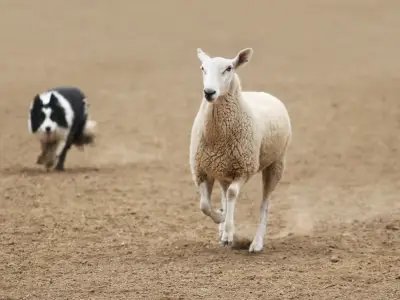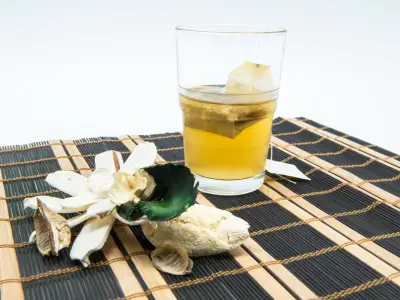An artfully designed Christmas wreath is the introductory craft piece to your festivities this — and every — year. Placed outside your house, it can open the door to seasonal fun and welcome well-wishers like a beacon of light. Above a mantelpiece, it creates unity in your decor. Over the table, it can create a centrepiece and focal point for the moment everyone looks forward to the most — the Christmas Day dinner. So, what will your Christmas wreath say about the kind of Noël you want this year?
First things first, you’ll need to know how to craft your Christmas wreath. Armed with this knowledge, you should be able to decipher your crafting capabilities and decide whether to opt for a beautifully simple design or to craft yourself a creative masterpiece for this merry time of year.
How to Make a Christmas Wreath: The Basics
To begin with, select a wire or wooden frame or a floral foam ring for your Christmas wreath. All can be acquired relatively cheaply. However, if you’d like to keep the budget as low as possible, why not attempt to craft a frame with wood that you forage from the great outdoors?

A floral foam ring is preferable to keep your plants fresh for longer — unless you’re adding moss to your frame, which will provide moisture — but the foam ring will need soaking before you begin crafting and then once every week henceforth. Wire and some wooden frames are reusable but the technique is slightly more complicated than using a foam ring, into which you simply insert the stems of your plant materials.
Make sure you are prepared to craft your Christmas wreath around your selected ring or frame with a clean, clear workspace and some key equipment. This could include a floristry knife, scissors, secateurs, floristry wire, tape, a glue gun, stapler, and string, depending on your ideas. Take extra care when handling any sharp implements or plant matter and, ideally, use floristry gloves to protect your hands.
You’ll also need to plan and source all your plant materials, any accompanying extras, and have these to hand.

You can now follow this basic step-by-step guide on how to make a wire or wooden frame Christmas wreath with a base layer of moss for moisture.
- Secure one end of your floristry wire reel around the frame with a few tight twists.
- Bundle a handful of your base foliage — in this case, moss — together and secure it to the frame by wrapping your floristry wire delicately around the plant matter.
- Repeat until the whole wire frame is covered in evenly distributed base foliage.
- Gather your decorative foliage and begin adding this atop the base foliage, securing it as you go using your floristry wire.
- Continue this process, ensuring the second layer of foliage is laid in the same direction, unless your design specifically dictates otherwise, and repeat until the whole of the base layer is evenly covered in beautiful foliage and secured with floristry wire.
- Cut the floristry wire from the reel, leaving enough to secure the end of the wire at the back of the wreath in more secure, tight twists.
- Discreetly loop a ribbon around the wire underneath the foliage from which your wreath will hang.
- Securely attach floristry wire to your chosen decorations, leaving two strands with enough wire spare to thread through to the back of the wreath and, there, attach the decorations to the structure in a secure twist.
Now you’ve got the basics, it’s time to get creative.

Which Plants are Perfect for Your Christmas Wreath?
The beauty of floristry is that the natural world can conceive of whatever is in your imagination. In other words, there is no plant you can imagine that Mother Nature hasn’t grown! To develop your floristry skills is to hone your ability to work with these plants to create beautiful and healthy arrangements.
So, there is no one right answer to this question. Floristry is subjective and what is beautiful to one may not be to another. Just as the scents and fragrances of your arrangements might split opinion, expect the design to do so, too.
But generally speaking, to create balance, proportion, rhythm, scale, dominance, contrast, and ultimately, harmony in your work, you will need to consider and account for each of the three types of plant species in floristry; flowers, greens, and plants.

With all three of these working together, you should be able to create something with desirable colour, form, space, and texture. All of your plant species should be sourced and maintained to keep them at their freshest for the longest time possible, which you can find out how to achieve in the Floristry Business Diploma Course. Alternatively, use dried flowers to avoid disappointment before the big day!
Decorating Your Christmas Wreath: Minimalist
There’s no doubt, Christmas can be an assault on the senses! If you want to keep things more mindful this yuletide and avoid overloading your home, try a minimalistic look.

For these, the frame — the only essential item to any Christmas wreath besides the plants themselves — is key.
Try letting the frame stand out and do all the hard work for you. While it might be a more costly one-off, it’ll save a lot of time in the run-up to Christmas.
Many frames are also reusable, too, which is a more sustainable choice, especially if you avoid plastic.

Other minimalist options might include a single focal point, whether that be a focus on one colour, plant species, or a limited amount of foliage, such as the Christmas classic, mistletoe.
Decorating Your Christmas Wreath: Luxury
Who doesn’t want a little bit of luxury at Christmas? If you’re paying for the posh biscuits, why not dedicate a little more time to your Christmas wreath, too? The pleasure is almost guaranteed to last longer!
While white lilies often symbolise sympathy at other times of the year, during the festive season, their snowy aesthetic screams luxury and grandeur. Likewise, roses are a good option for their connotations of special occasions.

But luxury doesn’t have to mean following the crowd. For something more unusual but just as sumptuous, try Red Carpet Red Bouvardia, Burgundy Antirrhinum, Ilex Blue Prince, and Purple Bloom Chrysanthemum. You could even opt for a wreath that matches the decor of your home for the ultimate style statement. Deep tones will be sure to make your Christmas wreath flourish with festive opulence.
Decorating Your Christmas Wreath: Classic Christmas
Again, keeping it classic can mean enjoying our old favourites and nestling into nostalgia for a cosy, hygge-style Christmas. For this, pull up your thermal socks, grab a hot chocolate and get to work with classics such as Poinsettias, with their rich, velvety red petals. Again, red and white roses or Christmas Roses are a tried and tested addition, as are holly and ivy and other sumptuous evergreen leaves.

Relying on the classic arrangements means you can have all kinds of fun and get creative with the extras. A simple arrangement can be decorated with festive scenes and knick-knacks from candy canes, Santa hats, sleigh bells, ribbons, and even little gifts. If you’re prone to a spot of baking, you could even jazz up your classic Christmas wreath by adding edible festive treats for added seasonal scents and sensations.
Decorating Your Christmas Wreath: Go for Gold
Sometimes, you just want the best of the best. If this sounds like you, go for gold this Christmas. The second best, but still just as beautiful especially in the winter months, is silver.

Both metallic looks can be achieved with handfuls of dried twigs, berries, pine cones, and just a little paint. Accompanying flowers could be kept minimal and neutral to let the metallics shine through.
Why not swap flowers for baubles instead for a longer-lasting wreath?

Your Christmas wreath could be dusted with fake snow to elevate the aesthetic, or you could try incorporating candles and twinkle lighting to bounce off that sparkly pigment in the paint for extra dazzle.
Decorating Your Christmas Wreath: Happy, Happy Holidays
In the Northern hemisphere, at least, Christmas signifies shorter days and longer nights, so perhaps you want to add a little bit of brightness to the proceedings for a festive mood-booster. Luckily for you, oranges, terracottas, peaches, pinks and yellow hues across the spectrum of warm tones have been on trend this year, so shouldn’t be too hard to source. Try tying together some cinnamon sticks or dried oranges and adding them to your Christmas wreath for extra scent.

If the psychedelic, seventies-inspired warm colours aren’t your cup of tea, try some regal-looking jewel tones such as teal, cobalt or violet.
Decorating Your Christmas Wreath: Natural Noel
Create height and depth even your Christmas tree would be jealous of within your arrangements, using twigs and branches that evoke the bare and beautiful landscapes of winter. If the twigs boast berries and pine cones, even better! Try offsetting their hard lines with softer grasses or blonde pampas grass, cotton, bunny tails, and wheat stems. These look striking next to the darker colours of preserved eucalyptus, parvifolia, and thistle.

Baby’s Breath and wildflowers can also be used for texture. Hessian and burlap are very versatile fabrics, should you decide to incorporate a flat dimension into your dried, au natural Christmas wreath.
Decorating Your Christmas Wreath: Unique Nativity
Craft yourself a wreath from felt, paper or even pom-poms for a touch of youthful modernity. You could even knit your own if you have the time! Create a wreath entirely out of feathers, if you wish! The choice is yours and the only limit is your imagination.

You can add other crafts such as macramé. Add a personal touch with photographs of loved ones or remembrance trinkets. If you’d like to craft something Christmassy with any little ones, check out our 5 Christmas Craft Ideas Kids Will Love.
And from everyone here at Centre of Excellence, have a crafty Christmas!
At the time of publishing, entering the code LEARNING in the checkout will reduce the price of our
Floristry Business Diploma Course to £29.




